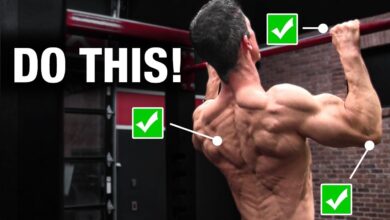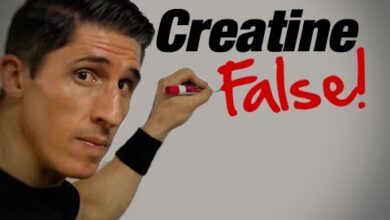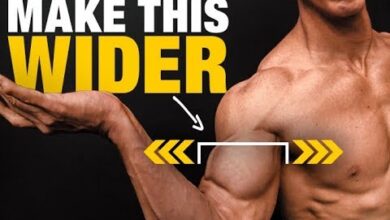
Build Muscle in 90 Days –
Subscribe to this channel here –
One of the most gruesome mistakes you can make when doing the deadlift results in a torn biceps tendon. In this video, I’m going to show you exactly what is causing the bicep tendon tears when deadlifting and more importantly how to make sure it doesn’t happen to you.
Many people think that the exercise itself is the cause. This is not the case. Thousands of reps of deadlifts are performed every day around the world and very few of them result in a torn biceps tendon. That said, when two ingredients are in place the risk of tearing a tendon become significantly more likely.
These are the use of a mixed grip and improperly directing force into the bar through the arms at the top of the lift. Let’s look at the mixed grip first. This is a prerequisite for this injury because it places one of the hands in an underhand position via supination at the forearm. The reason this grip is used is so that someone with a weaker grip can have better grasp of the bar. The underhand provides stability by preventing the rolling of the bar out of the hands as it will with a traditional overhand grip.
That said, it also immediately activates the biceps more and places tension through the upper arm that doesn’t happen through the pronated side.
Next however, is where the combination of this and more tension along with stretch becomes the perfect recipe for disaster. When you start to reach the top of the movement the exercise becomes most difficult. You have probably seen people struggle to get through the top of the move and finish their hip extension. It is at this point that the person is likely to rely on other muscles to help get there. This is when the biceps is mistakenly relied on to try and curl the bar to the top. Big mistake.
Often times, the amount of weight being handled on the deadlift is far surpassing any weight that can be reasonably or safely curled by the biceps. Combine this with the additional stretch that gets placed on the biceps tendon at this very moment (as the arm goes from a more flexed shoulder position to a more extended shoulder position – thereby placing more stretch on the biceps in the process) and you quickly see why tears occur in the distal attachment most frequently at this point.
The best way to avoid this happening to you is to actively contract the triceps throughout every rep of the deadlift. Here is what that will accomplish. First, the contraction of the triceps around the elbow will reciprocally inhibit the action of the biceps and not allow it to contribute at the moment you do not want it to. You have essentially quieted the biceps and prevented it from administering tension into the bar.
The second benefit is that through activation of the triceps you are creating stability of the scapula due to the long head attachment of the muscle. This combined with the conscious activation of the lower traps, rhomboids and lats will help to stabilize the shoulder blade and provide more power through the lift by removing slack from the kinetic chain. It is simple to do and is something you can easily be aware of if you slip and forget to do so.
These and other advanced training tips is what training like an athlete is all about. If you are looking for a complete training program that shows you the fastest way to get gains, head to and look for the athlean-x Training Systems. Overlook nothing in your training and see how much more quickly you can take your physique to the next level of development.
For more videos on how to increase your deadlift and the proper form on deadlifts, be sure to subscribe to our channel here on youtube at and turn on notifications so you never miss a new video when it is published.
622980 Views – 22605 Liked
biceps tear,biceps tendon tear,torn biceps,deadlift,deadlifts,deadlift form,biceps tear with deadlifts,torn biceps with deadlifts,torn bicep with deadlifts,torn biceps deadlifting,bicep tendon tear,torn biceps tendon,mix grip deadlifting,deadlift mix grip,deadlift hook grip,hook grip on deadlifts,how to hook grip,how to perform hook grip,increase deadlift,stronger deadlift,deadlift strength,athleanx,athlean x,jeff cavaliere
#Avoid #Deadlift #Mistake #TORN #biceps
*





Want to win an ATHLEAN-X program for free, no strings attached? Click the link below to find out how!
https://giveaway.athleanx.com/how-to-win.html
I tore my distal bicep last week smh..Not doing something bad ass like dead lifting..I was pulling the trash to the front of the house..smh
Why not buy a pair of straps instead of risking a bicep tear.
Didn't understand any of that.
Jeff just saved thousand biceps in just a few mins🎁
That’s exactly how I suffered a complete rupture of my distal bicep tendon. That exact desc of movement and even after surgical repair I still have issues.
Or just use the trap bar, under the TV there, with a hammer grip. I hate scraping a gnarled barbell up my shins.
I never bothered with mix grip… the first time i tried i knew i would tore my bicep in 2-3 days doing that so i just do regular grip
Jeff, didn't you just tear your bicep? I hope it heals quickly. Did you have to have surgery?
Stay healthy, folks. Tfs, Jeff. To everyone reading this, Jesus loves you.
I could never do underhand grip deadlifts because I could feel the tension on my biceps tendons immediately. You have to tense the bicep to get into underhand so maintaining underhand while lifting you will be tempted to contract the biceps to keep your wrists from twisting.
I have to say, you are totally right, everyone pop their bicep deadlifting, is with the mixed grip.
If you lock out your supinated elbow, it puts forces through the much stronger tricep tendon, and balances the power. That said, train arms, mixed grip homies.
This guy really knows what hes doing
Mf really took 10 minutes to say don't try to curl the weight?
Only time I ever pulled a bicep was coming out of a rack doing shrugs with straps on when I usually do heavy shrugs with chalk and a mixed grip … I'm not the strongest but I'm going to guess having pulled 650 on the deadlift and 495 in the straight leg deadlift I'm stronger than many. Here who will say it's going to blow up a bicep . One thing is sure no one who has any reasonable strength can pull enough weight with double overhead grip to challenge the actual target muscles during heavy pulling and hook grip is garbage .
Meh use straps
Or you can just be a true gym chad and use hook grip like a bawss
Jeff, straps are not band aids. You still have to grip, you still develop your grip, you simply have additional help for when your grip does begin to fail, so that the rest of your body is not bottlenecked.
This is a great video.
Killing it in all black look
Basically don’t flex your bicep, treat that arm like a hook and you’ll be fine